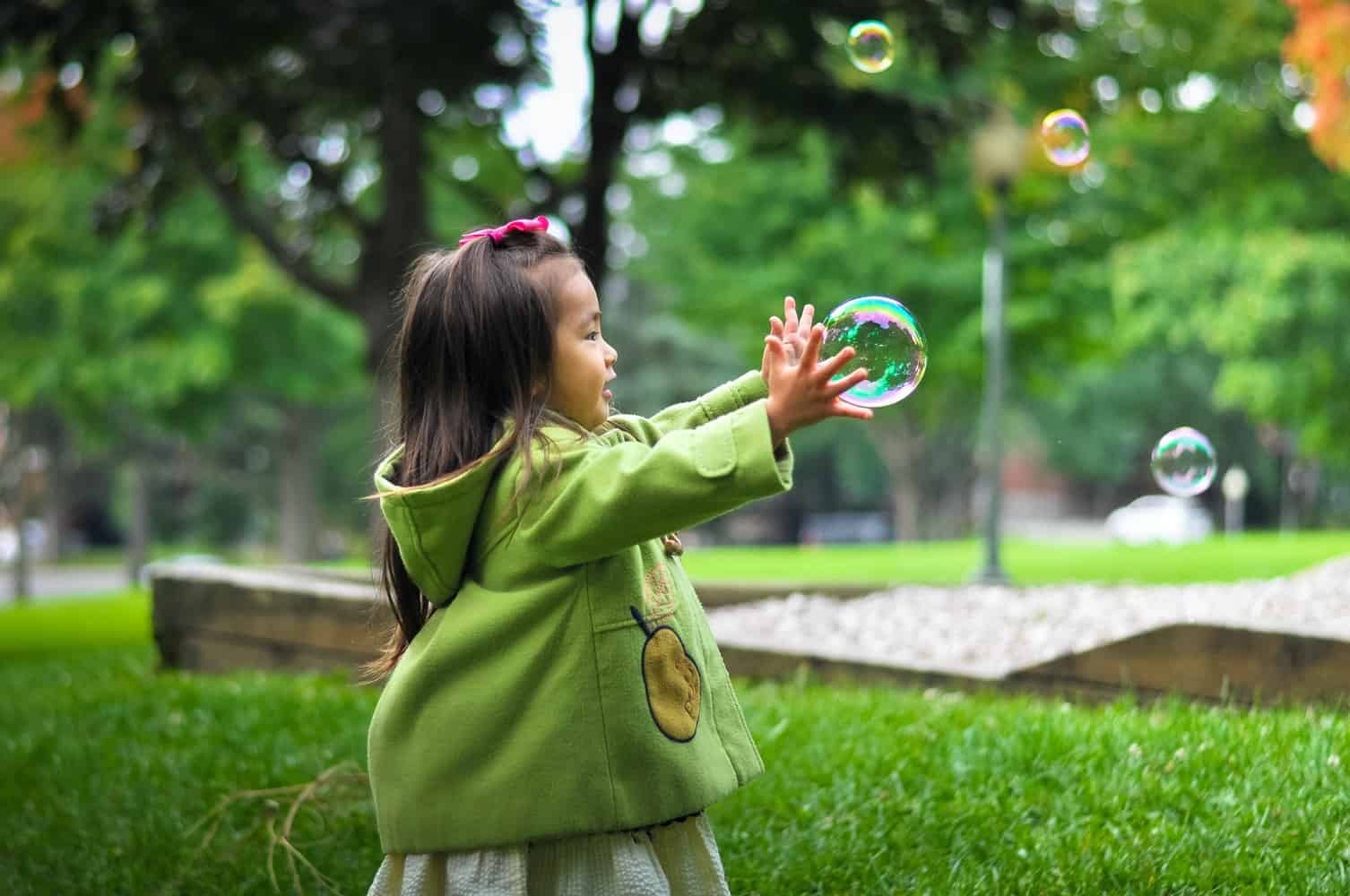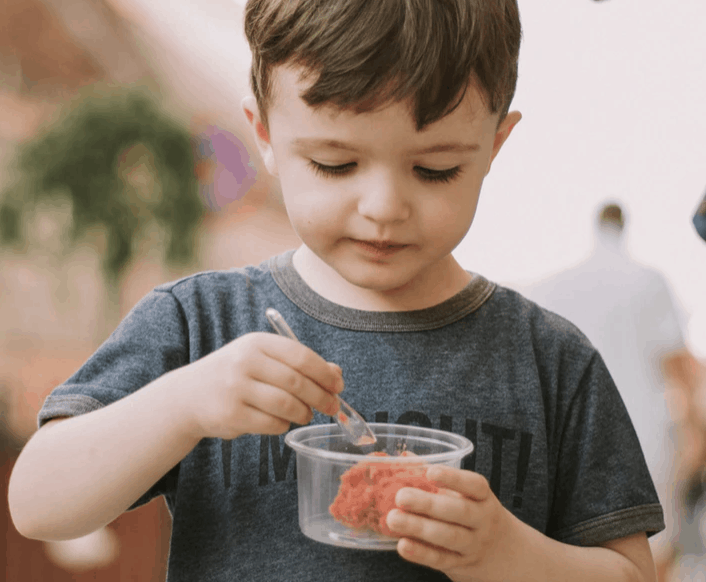What child doesn’t love to spend a rainy day doodling, making up a story, or playing pretend? These types of creative activities are more than just fun: they can have profound and lasting benefits on your child’s health.
In this article, we’ll go over the importance of creativity for your child’s cognitive and socio-emotional development. Then, we’ll go over 8 ways—including a few creative activities— you can use to help your child explore their imagination.
Why is Creativity So Important?

Additionally, creative activities can improve your child’s mood and well-being. A study at Brooklyn College found that drawing helped children calm down after recalling a distressing memory.[11] And when people are focused on a creative project, they are more likely to feel happier and report that they are “flourishing.”[10]
The “whys” for teaching children to be creative are clear: it leads to stronger emotional and brain health. But sometimes, determining where to start can be tough. Read on for nine tips to help your child explore their imagination and learn to think creatively.
8 Ways to Boost Creativity as a Family
1. Teach children to ask “what if” questions.
In an article with Psychology Today, researcher Melissa Burkley recommends teaching children to ask, “What if?” to enhance their creativity.[6] If you can get your children to ask questions about the world and how it works, they’re more likely to come up with their own unique answers.
For a fun creative exercise, see who can come up with the craziest “what-if” situation. A few ideas to get started:
- What if animals could suddenly talk?
- What if there really were pots of gold at the ends of rainbows?
- What if one day your teacher was replaced by an elephant?
2. When mistakes happen, try to find the positives.
Your child may feel discouraged if they don’t succeed the first time they try something. But mistakes often teach us more than success and can encourage your child to try new, creative solutions.[2]
If your child is struggling with a learning concept, try to help them see it in a different light. For example, if your child is working to learn a new vocabulary word, you could try spelling it out to the tune of their favorite song.
3. Learn about and encourage your child’s interests.
When children are passionate about a subject, they’re more likely to put their heart into it. Get to know your child’s creative dream, and help them to pursue it. If your child wants to learn to draw, for example, spend an afternoon drawing together and celebrate their progress.
4. Ask your child open-ended questions.
Asking your child questions can boost creativity as much as getting them to ask questions themselves. Asking open-ended questions—questions that require an answer longer than “yes” or “no”—can help children learn to form their own ideas and develop creative thinking.[1]
In an article with Scholastic, Dr. Honig included a few open-ended questions to get your child started:[1]
- What could happen if it always rained on Saturdays?
- Why don’t we wake up with our hair neat and combed?
- If you saw a mouse in your backyard chewing your mother’s favorite flowers, what would you do?
5. Spend time outside.
Danish researchers discovered that getting out in nature is not only good for mental health—it can improve creativity, too. Their study found that spending time outdoors can enhance curiosity, encourage flexible thinking, and help you recharge.[5]
Next time the weather allows it, go on a walk around your neighborhood to refresh your child’s mind and give them a good brain boost.
 6. Encourage free time and creative play.
6. Encourage free time and creative play.
Psychologist and Psych Central contributor Margarita Tartakovsky recommends unstructured free time as a way to support creative thinking.[3] Give your child a little time each day to independently explore their own ideas and interests.
Additionally, make time for creative play—or free time that encourages curiosity or creative thinking.[7] Offering your child a pack of crayons and some paper or encouraging them to play pretend with siblings can be great ways to support creative play.
7. Teach your child to try creative risk-taking.
If your child is working on a creative project, encourage them to try something new—even if they’re not sure it will work out. They could, for example, try drawing something more complicated than they usually do or learn a new song on an instrument.
Teaching your child to take creative risks can help them focus more on the creative process than the outcome.[4] That way, even if a project doesn’t turn out how they expected, they’re learning to try something different and think from new angles.
8. Read together.
Did you know that reading can boost your child’s imagination and problem-solving skills? [9] Make a goal to read a picture or chapter book together every day.
If your book has pictures in it, ask your child to guess what the page is about before you read it together. This can help children practice problem-solving, as well as reading comprehension.
Sources:
- Honig, A.S. How to Promote Creative Thinking. https://www.scholastic.com/teachers/articles/teaching-content/how-promote-creative-thinking/.
- Smith, S., and Henriksen, D. Fail Again, Fail Better: Embracing Failure as a Paradigm for Creative Learning in the Arts. Art Education, 2016, 69(2), pp. 6-11.
- Tartakovsky, M. 9 Ways to Support Your Child’s Creativity. https://psychcentral.com/blog/9-ways-to-support-your-childs-creativity/.
- Brandt, A., and Eagleman, D. Three ways to help any kid be more creative. https://ideas.ted.com/three-ways-to-help-any-kid-be-more-creative/.
- Plambech, T., and Konijdendikj van den Bosch, C.C. The impact of nature on creativity – A study among Danish creative professionals. Urban Forestry & Urban Greening, 2015, 14(2), pp. 255-263.
- Burkley, M. Ask “What If?” to Boost Your Creativity. https://www.psychologytoday.com/us/blog/the-social-thinker/201712/ask-what-if-boost-your-creativity.
- PBS The Whole Child Staff. Creativity and Play: Fostering Creativity. https://www.pbs.org/wholechild/providers/play.html.
- Raising Children Staff. Preschooler creative learning and development: what to expect. https://raisingchildren.net.au/preschoolers/development/creative-development/preschooler-creative-development.
- Mcilroy, T. 8 Simple Ways to Develop Your Child’s Creativity. Retrieved from empoweredparents.co: https://empoweredparents.co/8-simple-ways-to-develop-your-3-6-year-olds-creativity/.
- Connor, T.S., DeToung, C.G., and Silvia, P.J. Everyday creative activity as a path to flourishing. The Journal of Positive Psychology, 2018, 13(2), pp. 181-189.
- Drake, J., and Winner, E. How children use drawing to regulate their emotions. Cognition and Emotion, September 2012, 27(3), pp. 512-520.
- Cohut, M. What are the health benefits of being creative? Retrieved from medicalnewstoday.com: https://www.medicalnewstoday.com/articles/320947.
- Kaufman, S.B. The Neuroscience of Creativity: A Q&A with Anna Abraham. Retrieved from scientificamerican.com: https://blogs.scientificamerican.com/beautiful-minds/the-neuroscience-of-creativity-a-q-a-with-anna-abraham/.


 6. Encourage free time and creative play.
6. Encourage free time and creative play.